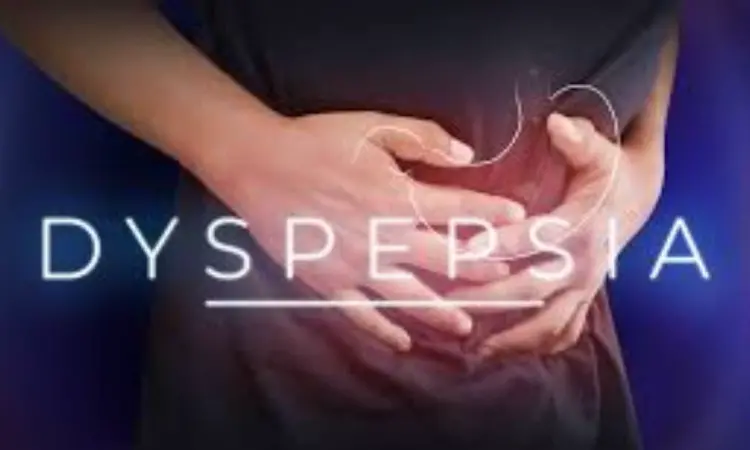- Home
- Medical news & Guidelines
- Anesthesiology
- Cardiology and CTVS
- Critical Care
- Dentistry
- Dermatology
- Diabetes and Endocrinology
- ENT
- Gastroenterology
- Medicine
- Nephrology
- Neurology
- Obstretics-Gynaecology
- Oncology
- Ophthalmology
- Orthopaedics
- Pediatrics-Neonatology
- Psychiatry
- Pulmonology
- Radiology
- Surgery
- Urology
- Laboratory Medicine
- Diet
- Nursing
- Paramedical
- Physiotherapy
- Health news
- Fact Check
- Bone Health Fact Check
- Brain Health Fact Check
- Cancer Related Fact Check
- Child Care Fact Check
- Dental and oral health fact check
- Diabetes and metabolic health fact check
- Diet and Nutrition Fact Check
- Eye and ENT Care Fact Check
- Fitness fact check
- Gut health fact check
- Heart health fact check
- Kidney health fact check
- Medical education fact check
- Men's health fact check
- Respiratory fact check
- Skin and hair care fact check
- Vaccine and Immunization fact check
- Women's health fact check
- AYUSH
- State News
- Andaman and Nicobar Islands
- Andhra Pradesh
- Arunachal Pradesh
- Assam
- Bihar
- Chandigarh
- Chattisgarh
- Dadra and Nagar Haveli
- Daman and Diu
- Delhi
- Goa
- Gujarat
- Haryana
- Himachal Pradesh
- Jammu & Kashmir
- Jharkhand
- Karnataka
- Kerala
- Ladakh
- Lakshadweep
- Madhya Pradesh
- Maharashtra
- Manipur
- Meghalaya
- Mizoram
- Nagaland
- Odisha
- Puducherry
- Punjab
- Rajasthan
- Sikkim
- Tamil Nadu
- Telangana
- Tripura
- Uttar Pradesh
- Uttrakhand
- West Bengal
- Medical Education
- Industry
Transcutaneous Auricular vagus nerve stimulation Effective in Treating Functional Dyspepsia

A recent study published in the The American Journal of Gastroenterology found that transcutaneous auricular vagal nerve stimulation (taVNS) is an effective therapeutic avenue for adults who suffer from functional dyspepsia (FD). FD is a condition marked by persistent upper abdominal discomfort that affects millions globally. This approach pf targeting the vagal nerve has remarkable effectiveness in modulating gastrointestinal motility, inflammation, and nociception.
The study randomly enrolled consecutive FD patients meeting Rome IV criteria. The patients were allocated to receive either 10-Hz taVNS, 25-Hz taVNS, or a sham treatment. Over a period of 4 weeks, participants underwent 30-minute sessions twice a day. The primary outcome measured was the response rate at week 4 that indicated a reduction of ≥5 points in the modified FD Symptom Diary score compared to baseline. Secondary outcomes included the rate of adequate relief and monitoring adverse events.
Among the total 300 patients enrolled, the participants in the V10 and V25 groups demonstrated significantly higher response rates (81.2% and 75.9%, respectively) compared to the sham group (47%). Both V10 and V25 groups also exhibited higher rates of adequate relief (85.1% and 80.8%, respectively) in contrast to the sham group (67%). Also, there was no statistically significant difference between the V10 and V25 groups in terms of response rates and adequate relief. The therapeutic effects of taVNS endured through weeks 8 and 12 of the follow-up period showed its lasting impact, while the adverse events were minimal and comparable across all groups (1%-3%).
This study is the first to demonstrate that a 4-week regimen of taVNS at 10 Hz or 25 Hz which is both effective and safe for treating adult FD. The findings open new doors for non-invasive neuromodulation techniques in the context of gastrointestinal disorders that provides hope for those seeking relief from the burdens of functional dyspepsia.
Reference:
Shi, X., Zhao, L., Luo, H., Deng, H., Wang, X., Ren, G., Zhang, L., Tao, Q., Liang, S., Liu, N., Huang, X., Zhang, X., Yang, X., Sun, J., Qin, W., Kang, X., Han, Y., Pan, Y., & Fan, D. (2023). Transcutaneous auricular vagal nerve stimulation is effective for the treatment of functional dyspepsia: A multicenter, randomized controlled study. The American Journal of Gastroenterology. https://doi.org/10.14309/ajg.0000000000002548
Neuroscience Masters graduate
Jacinthlyn Sylvia, a Neuroscience Master's graduate from Chennai has worked extensively in deciphering the neurobiology of cognition and motor control in aging. She also has spread-out exposure to Neurosurgery from her Bachelor’s. She is currently involved in active Neuro-Oncology research. She is an upcoming neuroscientist with a fiery passion for writing. Her news cover at Medical Dialogues feature recent discoveries and updates from the healthcare and biomedical research fields. She can be reached at editorial@medicaldialogues.in
Dr Kamal Kant Kohli-MBBS, DTCD- a chest specialist with more than 30 years of practice and a flair for writing clinical articles, Dr Kamal Kant Kohli joined Medical Dialogues as a Chief Editor of Medical News. Besides writing articles, as an editor, he proofreads and verifies all the medical content published on Medical Dialogues including those coming from journals, studies,medical conferences,guidelines etc. Email: drkohli@medicaldialogues.in. Contact no. 011-43720751


